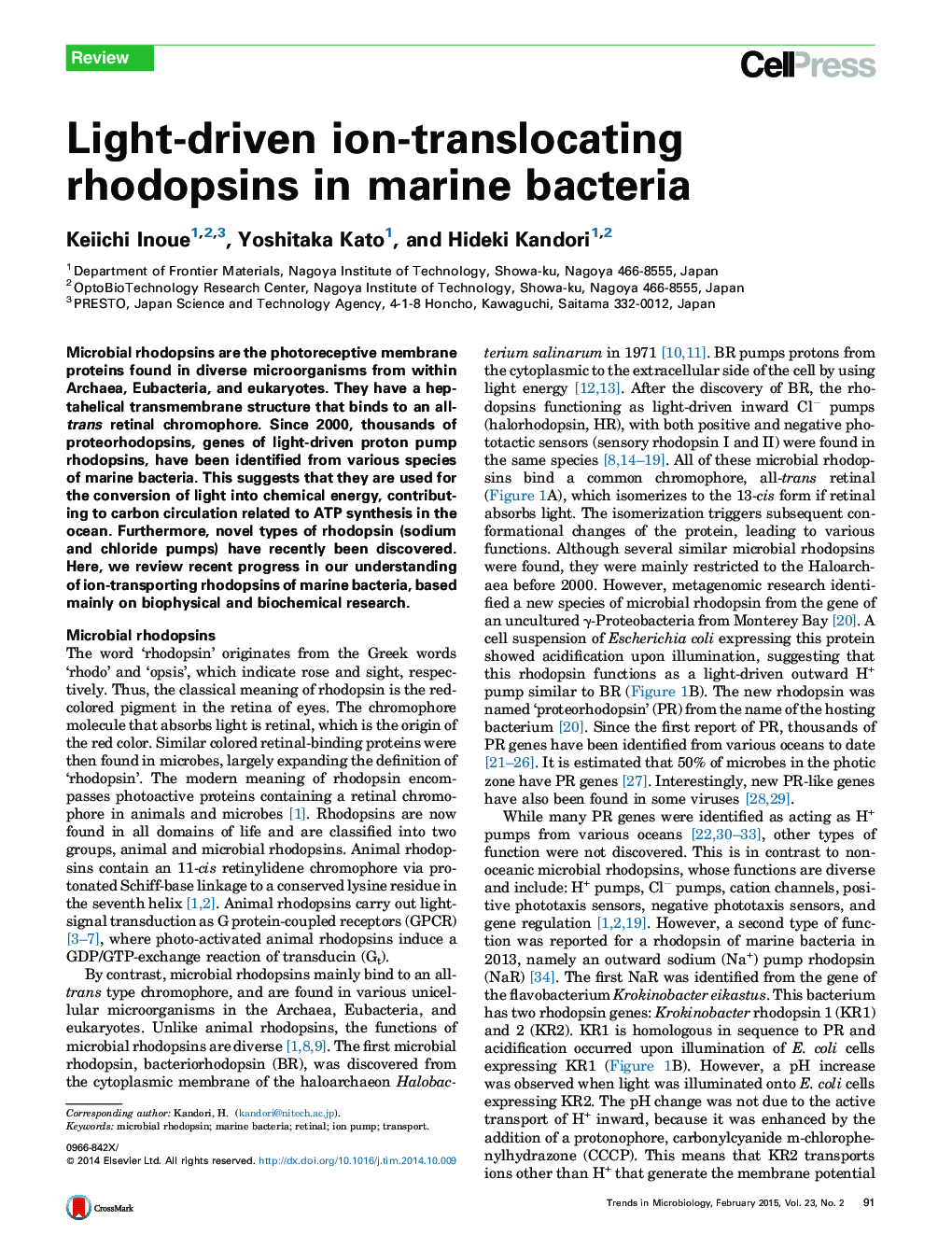| Article ID | Journal | Published Year | Pages | File Type |
|---|---|---|---|---|
| 3421874 | Trends in Microbiology | 2015 | 8 Pages |
•Marine bacteria contain three different rhodopsins that pump H+, Na+ and Cl−.•Spectroscopic studies revealed active transport mechanisms of marine bacterial rhodopsins.•KR2 is a compatible Na+–H+ pump, whose function depends on the environment.•Na+ binding in the dark is not needed for transport and Na+ is taken up upon formation of O intermediate.
Microbial rhodopsins are the photoreceptive membrane proteins found in diverse microorganisms from within Archaea, Eubacteria, and eukaryotes. They have a heptahelical transmembrane structure that binds to an all-trans retinal chromophore. Since 2000, thousands of proteorhodopsins, genes of light-driven proton pump rhodopsins, have been identified from various species of marine bacteria. This suggests that they are used for the conversion of light into chemical energy, contributing to carbon circulation related to ATP synthesis in the ocean. Furthermore, novel types of rhodopsin (sodium and chloride pumps) have recently been discovered. Here, we review recent progress in our understanding of ion-transporting rhodopsins of marine bacteria, based mainly on biophysical and biochemical research.
